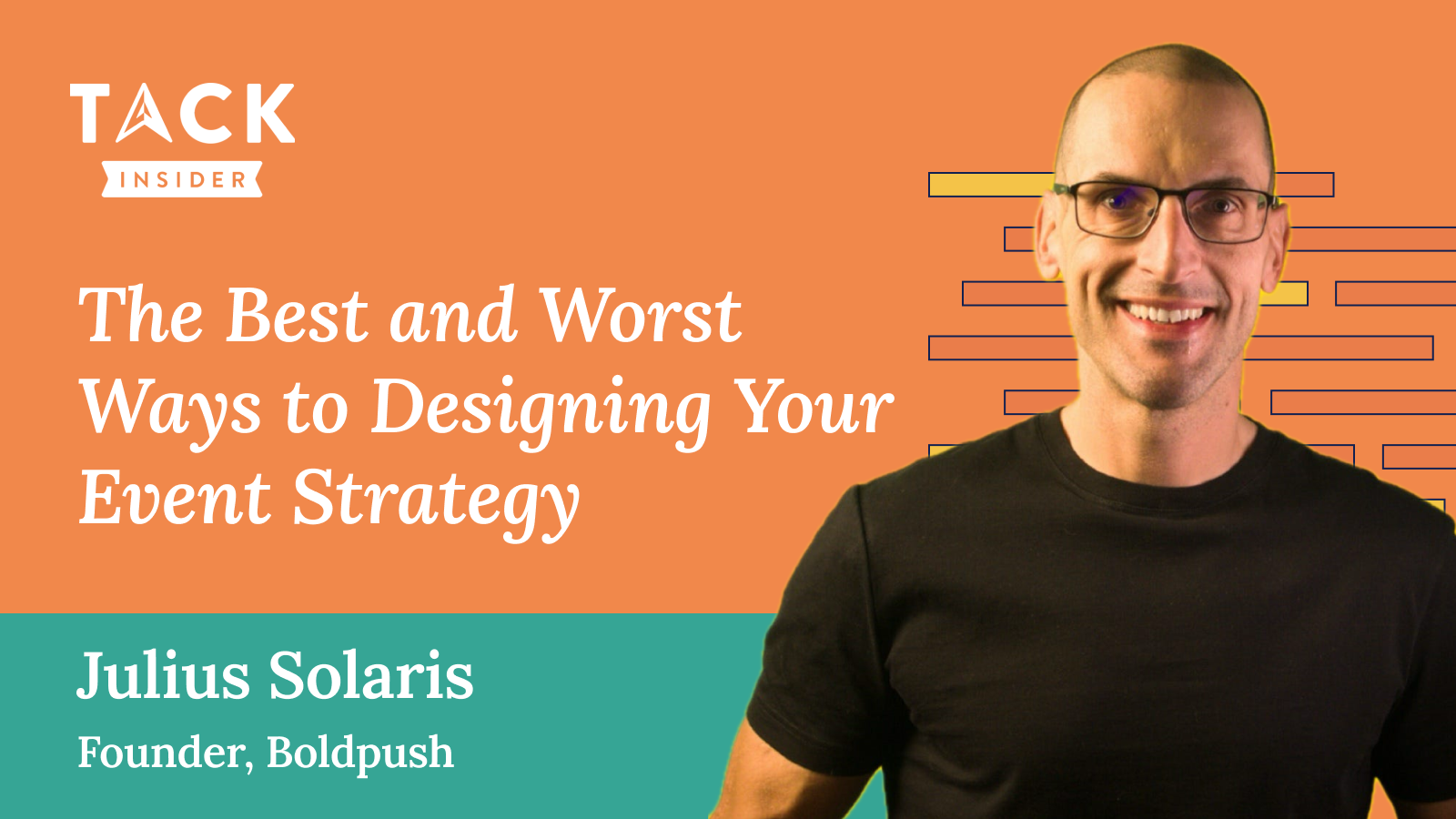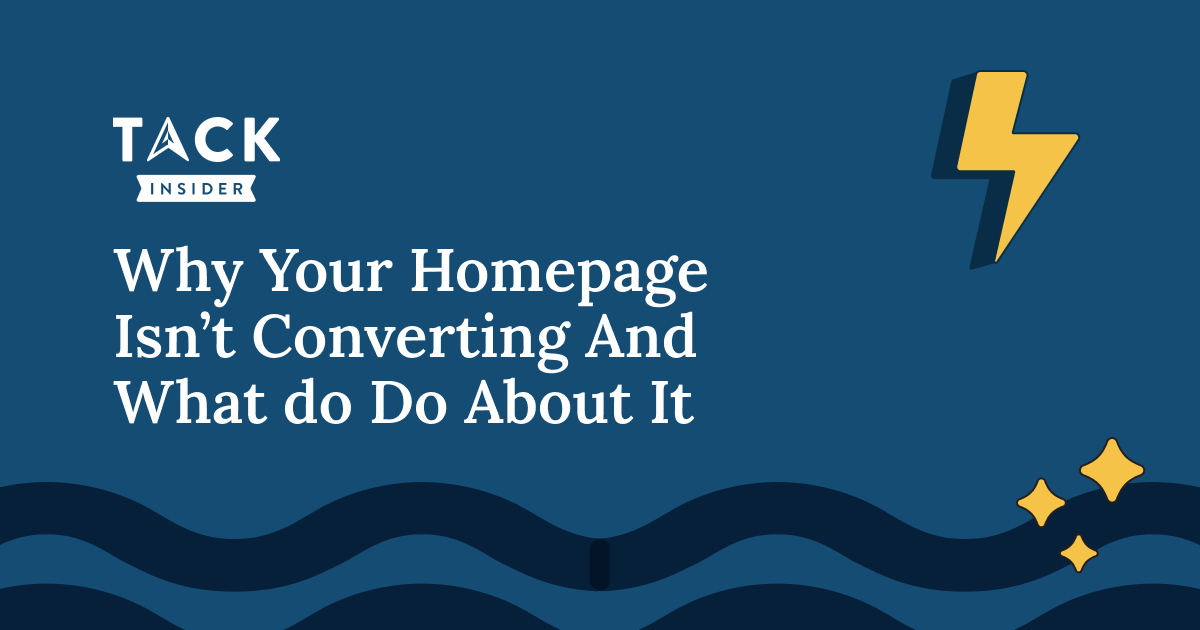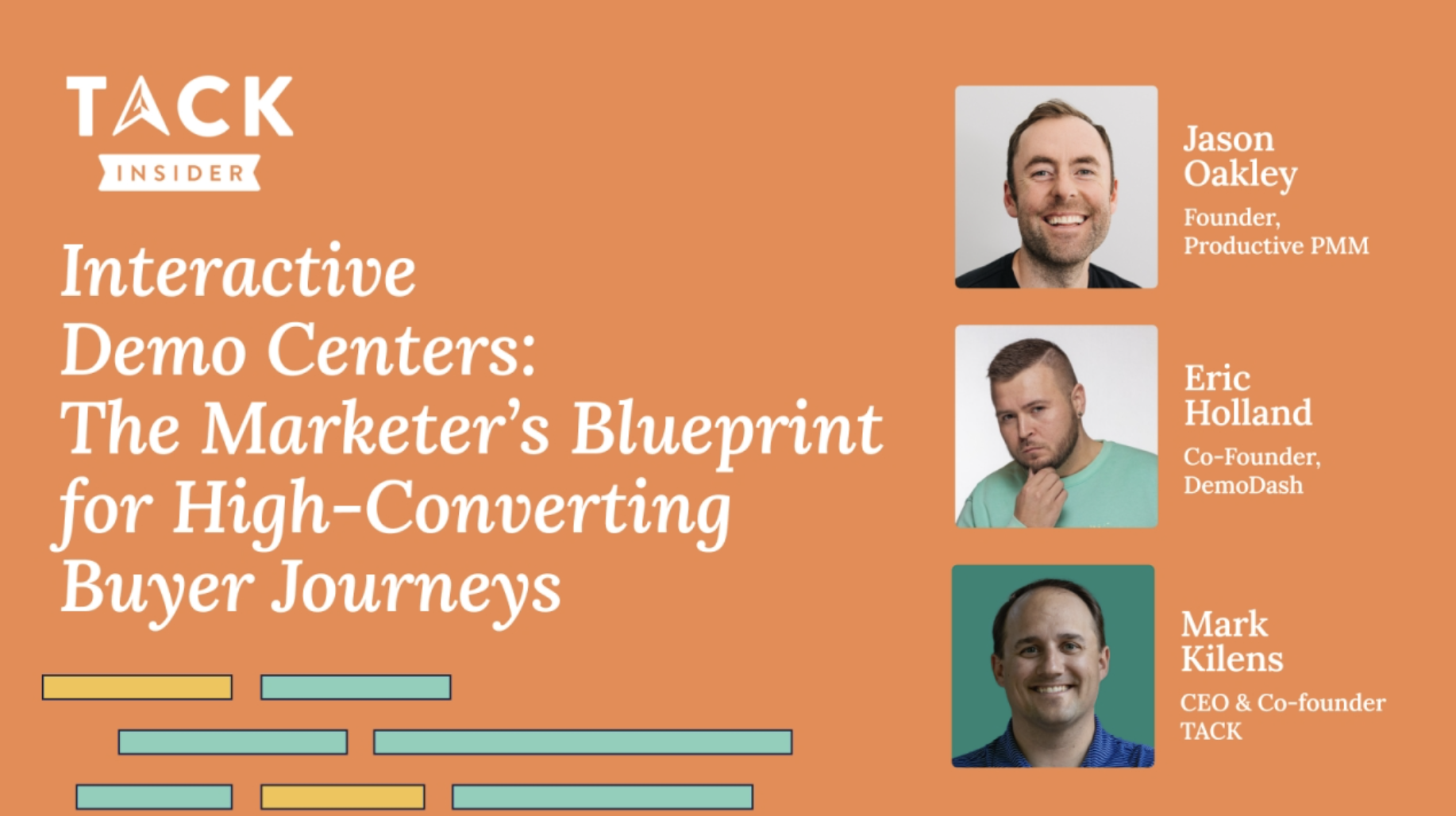Hosted by: Mark Kilens, CEO & Founder at TACK
Speakers: Julius Solaris, Founder at BoldPush
Overview
Most B2B events aim to impress. But in today’s crowded landscape, a dazzling production isn’t enough. You need strategy, backed by data, audience insight, and a clear pipeline plan. In this TACK Insider session, we sat down with the founder of BoldPush and longtime leader in the events industry, to unpack how modern event strategies must evolve to meet both business and attendee expectations. What follows is a grounded, tactical look at event-led growth, from design to data activation to post-event impact.
Check out the full slides of the webinar
1. Events Are No Longer Just for Brand—They’re Full-Funnel Tools
Events have long lived in the “brand awareness” bucket. But today, they’re proving valuable across the customer lifecycle. Julius emphasized that the best event strategies integrate across GTM stages—driving not just net new pipeline but expansion, retention, and reengagement.
Key uses of events across the funnel include:
- Awareness: Webinars and flagship events like Dreamforce
- Consideration: Hands-on workshops and user product walkthroughs
- Decision: Intimate, high-touch dinners or AMAs
- Retention: Community roundtables and user group meetups
- Reengagement: Inviting churned customers back via social or seasonal events
“Most B2B marketers don’t realize the power of reengagement events. You’re not just bringing someone back—you’re showing them what they missed.”
2. Data Is the Missing Link (But It’s Finally Getting Easier)
For years, event marketers have struggled to operationalize the data events produce. That’s changing. Julius outlined how new tooling—including AI copilots and event-specific analytics platforms—is bridging the gap between data collection and activation.
Steps to get started:
- Collaborate early with revenue ops or sales ops to align on objectives
- Define what you need to capture (e.g. attendee engagement, poll responses, content viewed)
- Map how that data connects to your CRM and downstream workflows
- Use AI tools to analyze patterns and suggest campaigns or outreach
Julius stressed that platforms like Splash and Visible are leading this transformation, citing 3x pipeline growth and 10x ROI when event data is properly activated.
3. Attendee Motivation Has Shifted—Your Messaging Should Too
Today’s attendees don’t register just for content. Julius broke down five motivations driving attendance, urging marketers to map messaging and design choices to these:
- Belonging – The desire for connection and inclusion
- Individual Gain – Self-promotion, learning, or exclusivity
- Emotion – The experience itself (location, activities)
- Transaction – Deal-making or lead-gen opportunities
- Education – Certifications, training, or career growth
If your landing page only promotes the keynote speaker, but your audience is motivated by networking or a beachside venue, you’ll miss your mark. Julius advised anchoring messaging above the fold to what truly matters to your target cohort.
4. Events Are Content Engines—Don’t Waste the Output
Most event content dies the day after the event. That’s a mistake. Julius made the case that every modern event should be planned with a content flywheel in mind—from repurposed recordings to micro-social assets.
Tactical suggestions include:
- Always record audio and/or video
- Use tools like Gloss.ai to generate short clips, posts, and transcripts
- Turn sessions into blog posts, newsletters, or podcast episodes
- Track which formats drive the most post-event engagement and optimize
He noted that a single 1-hour event can generate over 120 distinct insights—yet most companies only capture a fraction. “If you don’t record and repurpose, you’re leaving ROI on the table.”
5. Strategic Planning and Partnerships Are Non-Negotiable
Designing an effective event doesn’t start with a theme or speaker list—it starts with a brief. Julius and [HOST_NAME] both emphasized the need for pre-event planning documents that clarify:
- The objective (for both business and attendees)
- The desired outcomes before, during, and after
- Who the event is for—and who it’s not for
- The partners and tools required to amplify the effort
Julius also added an eighth “P” to his well-known Seven Ps of Event Planning: Partners. From co-hosts to satellite events during major conferences, partnerships are a proven way to increase reach and impact without ballooning costs.
“If there’s one thing to remember: events are no longer standalone efforts. They’re integrated, data-rich, content-producing engines that deserve a seat at the revenue table.”
Key Takeaways
- Design events for every stage of the funnel—not just top-of-funnel buzz
- Identify attendee motivations and align messaging accordingly
- Activate event data across sales, CS, and marketing with help from ops
- Record everything—content is your most undervalued output
- Use briefs and partnerships to elevate event quality and reach






